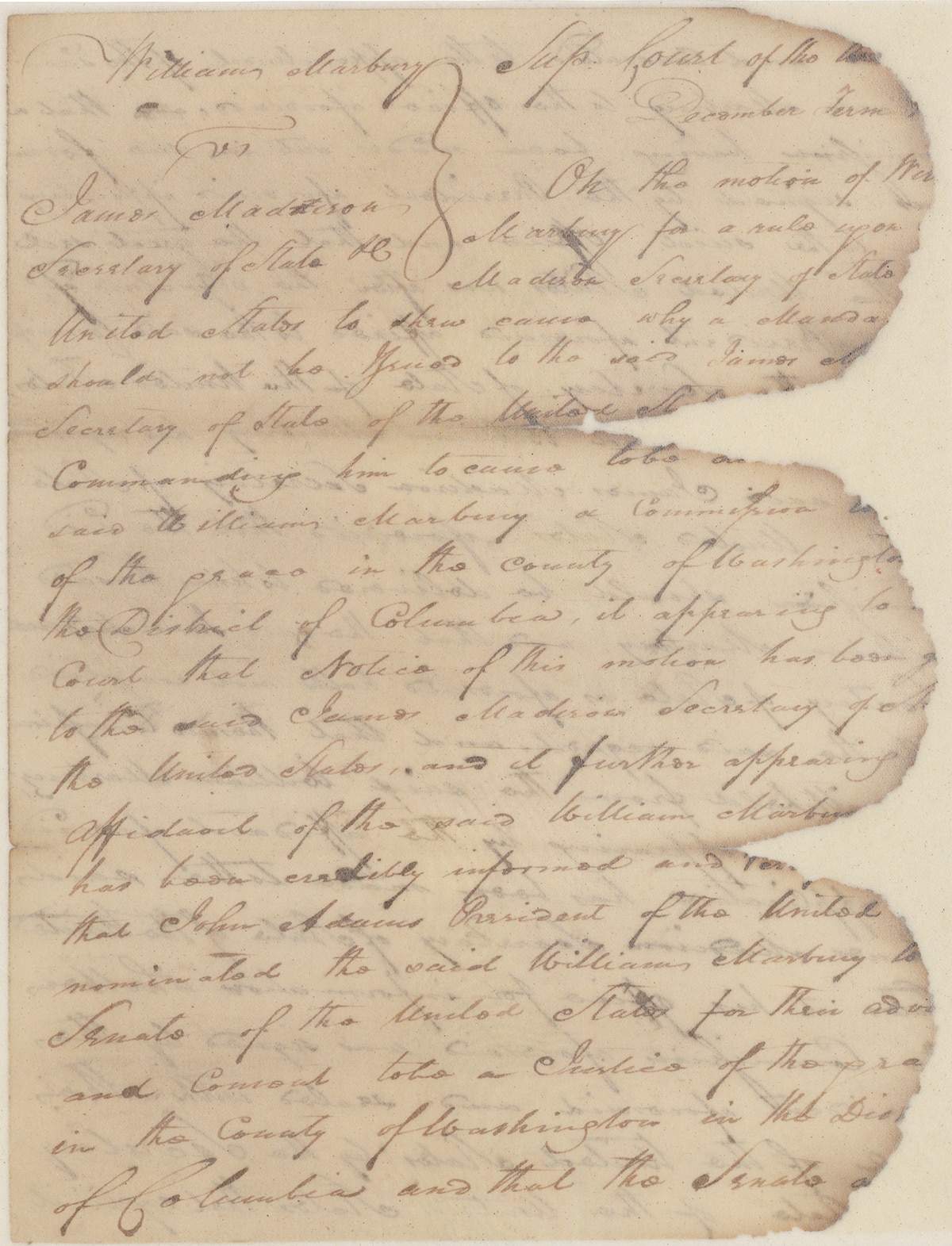RESOURCES
COURT CASES
Marbury v. Madison
1803
Marbury v. Madison (1803) is one of the most important Supreme Court decisions in American legal history because it established the principle of judicial review—the power of the federal courts to strike down laws and government actions that violate the Constitution. In the case, Chief Justice John Marshall ruled that while William Marbury had a right to his judicial commission, the section of the Judiciary Act of 1789 that gave the Supreme Court the power to enforce it was unconstitutional. This marked the first time the Supreme Court invalidated a law passed by Congress, asserting the Court’s authority as the final interpreter of the Constitution.
This foundational power of judicial review set the legal groundwork that would later allow the Supreme Court to both uphold and strike down laws related to racial segregation. In Plessy v. Ferguson (1896), the Court used that authority to affirm the constitutionality of segregation under the “separate but equal” doctrine, essentially endorsing the systemic separation of Black and white Americans across all aspects of public life—including education. Plessy was not just a reflection of the racist values of the time; it was a powerful use of judicial review to enshrine those values in constitutional law.
Over time, however, that same power—rooted in Marbury v. Madison—enabled the Court to reverse course. In Brown v. Board of Education (1954), the Court revisited the meaning of the Equal Protection Clause of the 14th Amendment and concluded that separate educational facilities were inherently unequal. Chief Justice Earl Warren, writing for a unanimous Court, explicitly rejected the precedent of Plessy in the realm of public education. This reversal was only possible because Marbury had established the Supreme Court’s authority to reinterpret the Constitution and to overrule previous decisions.
Marbury v. Madison is one of the most important Supreme Court decisions in American legal history because it established the principle of judicial review…
Thus, the legal line from Marbury to Plessy to Brown illustrates how the power of judicial review—first asserted in 1803—was used to both legitimize and later dismantle the legal framework of segregation.
